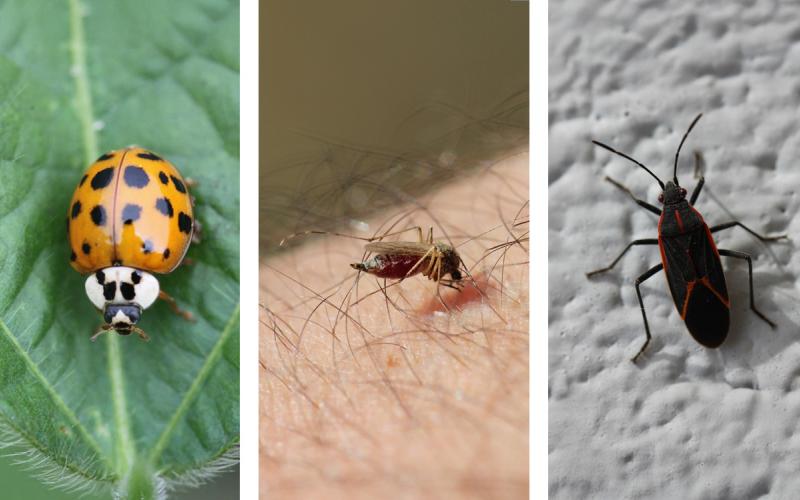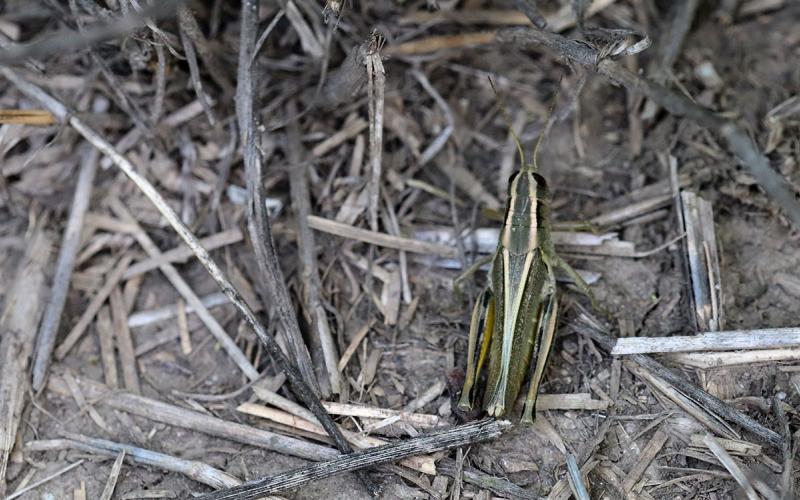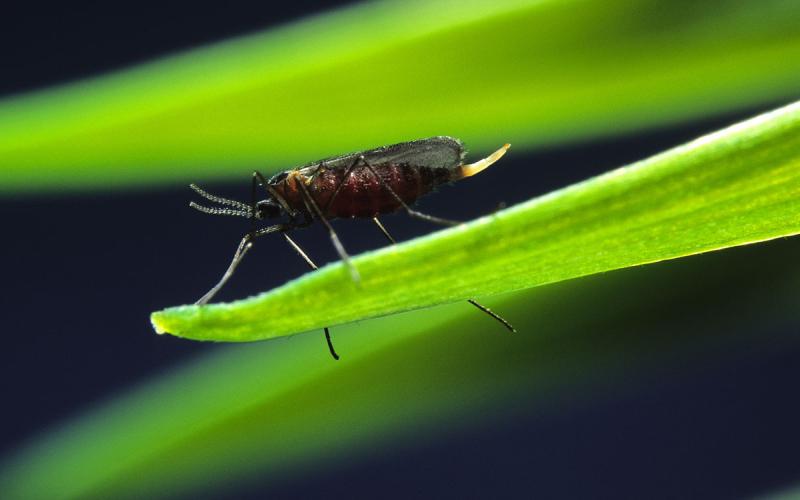About Brown Wheat Mites
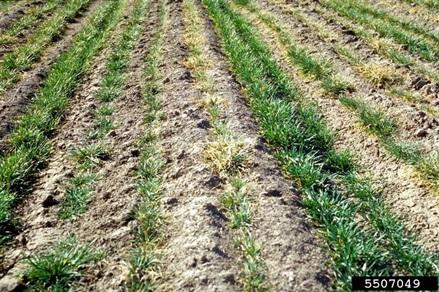
Written collaboratively by Adam Varenhorst, Amanda Bachmann, Ruth Beck and Patrick Wagner.
Recently, there have been reports of brown wheat mites throughout central and western South Dakota. The brown wheat mite is generally more of an issue in the drier parts of the state, or in areas experiencing drought. The feeding injury caused by these mites leaves white or brown spots that are referred to as stippling. The stippling caused by the brown wheat mite begins near the leaf tips, and is very similar in appearance to drought symptoms. To date, the reports have been for minor infestations, but severe infestations are possible. Fields that are heavily infested by the brown wheat mite often appear to be undergoing severe drought stress with dried leaves and withering plants (Figure 1).
Profile & Biology
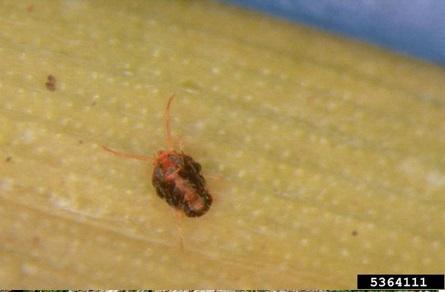
In general, brown wheat mites are quite small and are approximately the same size as a newspaper print period. Identification of brown wheat mites may require a 5-10X hand lens. They get their name due to the metallic brown/black coloration of their bodies. Brown wheat mites have a total of 8 legs that are light yellow/orange. The front pair of legs is nearly twice as long as the other three pairs of legs and can be used for identification purposes (Figure 2). Brown wheat mite activity is greatest in the early spring and populations usually peak in South Dakota around early to mid-May. Brown wheat mites produce two different colored eggs depending on the season. In late spring, females produce white eggs that will over-summer and hatch in the fall. Red eggs are produced in the fall, and the amount of unhatched red eggs can be used as an indicator of whether a population outbreak is going to occur or if populations are in decline. Both egg types are found in the soil near the base of wheat plants.
Scouting
When scouting a field for the presence of brown wheat mites, start at one side of the field and walk in a W or zig-zag pattern and randomly choose plants to examine. Brown wheat mites are generally found on the leaves, and populations may be higher near the tips of the leaves. Plants should be examined from several locations along the W or zig-zag pattern. See Table 1 for the economic thresholds for the brown wheat mite.
| Pest |
|
|
| Seedling stage | Boot to heading | |
| Brown wheat mite | 25-50 | 25-50 |
Management
If brown wheat mite populations are above the economic threshold, management may be necessary. Prior to insecticide application, check the weather forecast. The brown wheat mite favors drier conditions, but populations may naturally decline in the presence of precipitation. For insecticides that are currently labeled for brown wheat mite, please refer to the current edition of the South Dakota Pest Management Guide: Wheat.
